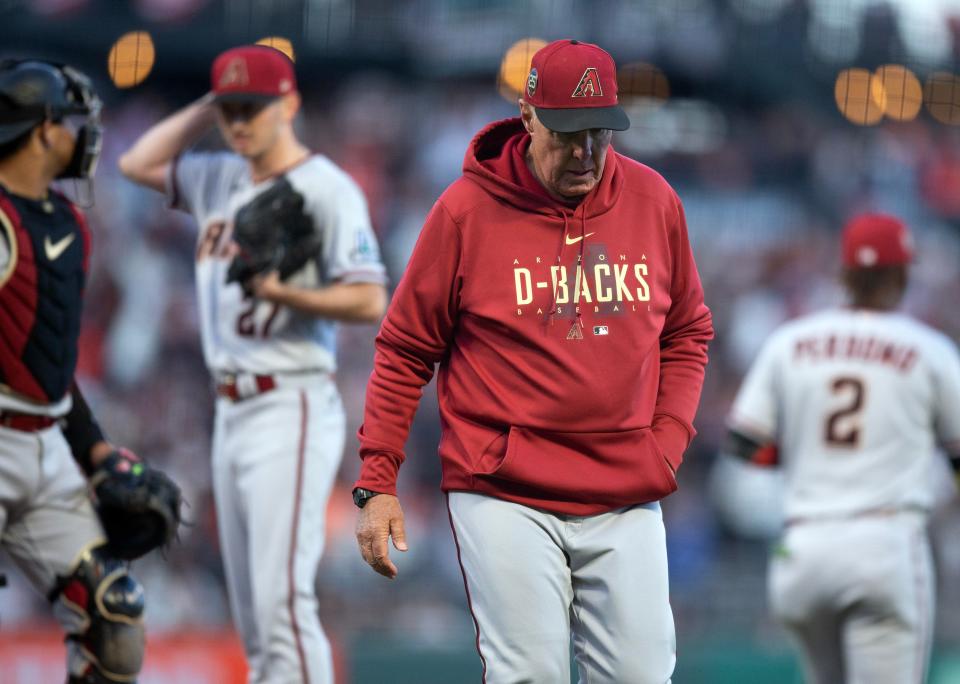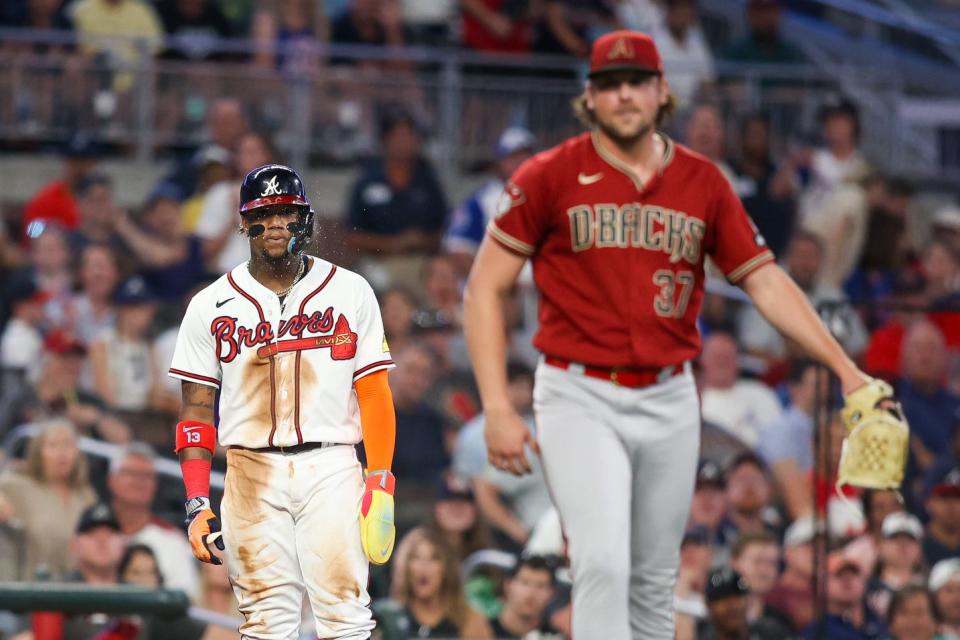On Wednesday night in Atlanta, Kyle Nelson and Kevin Ginkel entered a cauldron in the eighth and ninth innings, two unheralded relievers combining to silence a potent Atlanta Braves offense. Less than 24 hours later, Miguel Castro — a trusted high-leverage arm all year — blew up in a similar spot, costing the Arizona Diamondbacks a sweep when he served up a three-run home run to Austin Riley.
This, right now, is the state of the Diamondbacks bullpen. As a whole, it is no longer an abjectly bad unit, like it was last year. Then, they ranked 25th in ERA (4.58), last in strikeout rate (7.71 K/9) and tied a major league record for bullpen losses (41). This year, that ERA is down to 4.29 — still below average, but not by much. The strikeout rate is all the way up to 9.11.
And yet, the bullpen continues to lose games. Every team loses games in the late innings. But the Diamondbacks have done so at a frustrating rate, especially over the past six weeks. On the season, no team has allowed more runs in the ninth inning, and their 5.29 ERA in that inning is the worst among contenders. Their eighth-inning ERA, by contrast, is fifth in baseball at 3.43.
That doesn’t entirely detract from the good. Nelson and Ginkel’s outings Wednesday highlighted a welcome revelation in recent weeks. Manager Torey Lovullo now has at least five arms — Nelson, Ginkel, Castro, Scott McGough and Andrew Chafin — that he seems comfortable trusting in relatively high-leverage situations. That helps navigate a series like the one his team played in Atlanta, when every game was close, without putting too much burden on one or two pitchers, as the Diamondbacks often did early in the season.
“It’s a nice feeling to have a lot of pieces that I can maneuver down there on that back end,” Lovullo said.
That depth is a testament to both the front office and coaching staff. General Manager Mike Hazen and his staff claimed Nelson off waivers and signed Castro, McGough and Chafin this off-season to affordable deals.

Pitching coach Brent Strom, meanwhile, has helped fine-tune those arms. McGough has learned to rely heavily on a fastball up and splitter down, Nelson has been trained to throw his slider in the dirt for swinging strikes and Ginkel is riding a wave of strong outings.
“When I first saw Ginkel, … I thought his breaking ball was exceptional,” Strom said. “I thought it was a power slurve, curve, slider, however you want to define it. It was a swing-and-miss pitch. So with Kevin, it’s just a matter of command and confidence.”
But this week’s series revealed something else, too, even if it may have been obvious long before then. The Diamondbacks do not have one shutdown reliever who they can turn to in any situation.
In the eighth inning Wednesday, the Braves brought Orlando Arcia, Michael Harris II, Ronald Acuña Jr., Ozzie Albies, Austin Riley and Matt Olson to the plate. Five of those six were All-Stars. It is perhaps the most formidable portion of a lineup in the sport. In a two-run game, the situation was crying out for a reliever who could step to the mound and strike fear into opposing batters.
The Diamondbacks don’t have that. Among pitchers with 20 innings pitched, their best reliever by ERA ranks 41st. Their best reliever by strikeout rate ranks 19th. By walk rate, it’s 39th.
The solution has been a hot-hand approach. But playing the hot hand is like timing the stock market. Ginkel has pitched well recently, earning his chances to save. But how will the Diamondbacks know when his hand has turned cold? Likely by losing a game late, as they did when McGough suddenly hit a skid in late June, nearly blowing a game against the Giants and then actually blowing a game against the Rays three days later.
“There’s two trains of thought here,” Strom said, referring to the hot hand approach and the following, more traditional approach: “Some people believe that we perform better when everybody knows their assigned roles. We don’t have that luxury right now.”
Two weeks from now, this will be a moot point. The Diamondbacks will have to play with what they’ve got. But the 11 days before the trade deadline provide an opportunity.

Given the state of their bullpen, another borderline high-leverage arm doesn’t figure to drastically move the needle. Those moves are appealing because they’re cheap — on Wednesday, the Orioles acquired the intriguing Shintaro Fujinami for a 26-year-old reliever who was struggling in Triple-A. That’s useful when you’re Baltimore, with two of the best relievers in the game and uncertainty behind them.
The Diamondbacks are something of the opposite. They aren’t lacking reliable arms. If and when their bullpen settles back to an eight-man unit, the least reliable reliever may be someone like José Ruiz or Austin Adams, both of whom have been effective in spells. It’s hard to see how replacing them with another medium-leverage reliever would change the calculus.
What would is finding the type of reliever who can shut down players like Acuña, Riley and Olson.
Diamondbacks on TV: How to watch, stream MLB game broadcasts for the rest of 2023
Last week, Hazen said the Diamondbacks are prepared to be “aggressive, even ultra-aggressive” at the deadline, but not “reckless.” A series win over the Braves figures to have solidified that mindset.
In the relief market, though, it’s hard to parse exactly what that would look like. The top relievers on certain sellers include pitchers like the Cardinals’ Jordan Hicks and the Royals’ Scott Barlow, both of whom strike out tons of batters, but also walk too many. If the Mets (David Robertson, 2.13 ERA) or Padres (Josh Hader, 1.00 ERA) commit to selling, a truly elite closer would become available.
The price tag there wouldn’t be cheap, especially in a seller’s market. But it would exist for a reason.
This article originally appeared on Arizona Republic: Diamondbacks’ relief pitching woes exposed against Atlanta Braves